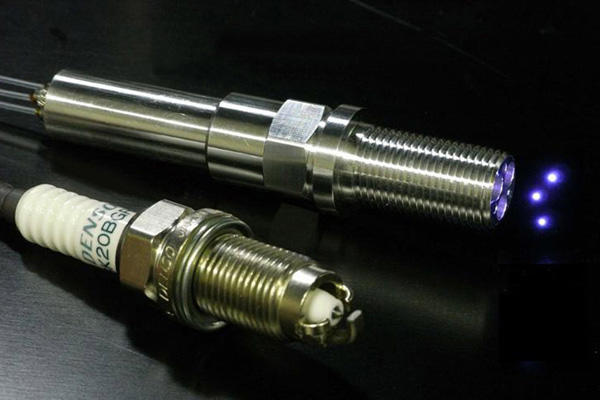How often you replace spark plugs depends on the type of plugs you have. You may have 30,000-mile plugs, or if the plugs have platinum tips, they may be good for up to 100,000 miles, although some professionals recommend replacement every 60,000 miles to avoid damage to the engine. However, if they become fouled with oil or become defective, spark plugs may need to bereplaced ahead of schedule.
There are several ways to tell whether or not the spark plugs on your vehicle need to be changed or just need to be adjusted and replaced. This section tells you how to do that. Of course, before you can evaluate the condition of your spark plugs, you have to find them.
Finding Your Spark Plugs
To locate your spark plugs, look for a set of thick wires (or thin cables) that enter your engine block in neat rows — on both sides if you have a V-type engine or on one side if you have a 4- or 6-cylinder in-line engine (also called a straight engine). These spark-plug wires run from the ignition coil (or the distributor on older vehicles) to the spark plugs.
Don't see your plugs? They may be hidden or hard to reach, which means that you need to reevaluate your plan to work on them. Be sure to read the following section before you do another thing!
Deciding if You Should do the Job Yourself
The first — and most important — thing to consider is whether or not you should change the spark plugs on your vehicle yourself. Because so many modern vehicles have crammed engine compartments that make access difficult, which can damage the spark plug wires and the threads in the cylinder heads, I honestly feel hesitant about even providing instructions. So take the cautions below seriously before deciding whether or not to proceed.
Even if only one of the following conditions is true for your vehicle (and they're true for most modern vehicles), you should have a professional change your plugs. You don't want to risk having to replace a really expensive ECU just to save a few dollars on a job that only has to be done infrequently! So don't be a hero!
- There's so little space between the stuff under the hood that it's difficult or impossible to get at your spark plugs. Remember, you need room to get a socket wrench in there to unscrew the plug and then replace it, and you need to have an unimpeded view of what you're doing. Not only that, but if you don't get the wrench at the correct angle, you can crossthread the plug or strip the threads it screws into. Both are bad news. You could end up needing a multi-thousand dollar repair.
- The entire engine has to be dismounted and lifted out of the vehicle in order to reach at least one plug. If you have one of these beasts, leave this job to the professionals.
Studies have found that many shops just don't bother to dismount the engine to get at difficult plugs. If left unchanged, that one funky plug can increase your fuel consumption, add to air pollution, and cause other problems. So, if your engine is one of these, when you bring your vehicle in for a tune-up be sure to confirm that the shop will do whatever's necessary to replace every plug.
- Your engine has an aluminum cylinder head. Because the metal is soft, it's easy to strip the threads in the spark plug's hole. If you do, the head will probably have to be removed for repair, and that means more megabucks. Most modern engines have aluminum heads, so for most people, this fact should eliminate doing this job yourself.
- Your spark plugs are hidden. On some vehicles, you can't get at the plugs until you remove other parts that are in the way. For example, on some transverse engines, you'd have to remove the top engine mount bolts in order to tilt the engine forward to replace the rear spark plugs. And on other engines, you can only get to some spark plugs from underneath or through the wheel well area.
Still other engines conceal the plugs beneath a metal shield that covers the engine. Removing this shield can require disconnecting cables that can seriously affect the ECU. That's why the shield is there! Some older domestic engines, most modern import engines, and an increasing number of modern domestic engines have systems that place an ignition coil directly atop each spark plug. There are no spark plug wires, and you can't see the spark plugs until you remove the aluminum cover that's bolted to the top of that engine.
If I were you, I'd leave all these vehicles to the professionals who have hoists and special tools that allow them to do the work safely and with relative ease.
Okay, with all this in mind, if you can get to your plugs easily and feel that you can do the job safely, proceed to the next section. Otherwise, skip it.
Before you take care of your spark plugs, you must understand what the terms cylinder sequence and firing order mean.
From Auto Repair for Dummies, copyright © 2009 by Wiley Publishing, Inc., Indianapolis, Indiana. Used by arrangement with John Wiley & Sons, Inc.










